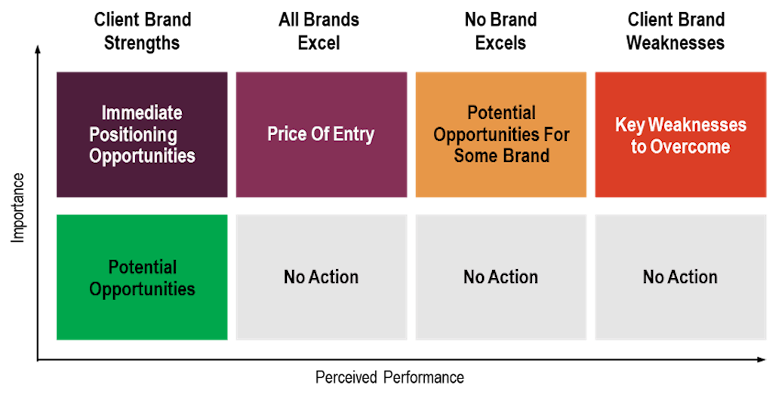Drive Brand Growth Through Your Brand Positioning
Effective brand positioning grows market share by connecting to the needs and motivations of target customers. When developing a positioning strategy, a brand must choose one or two key attributes to own in typically crowded marketplaces to inform product and service offerings and marketing communications.
How Should a Company Determine Which Attribute(s) to Emphasize?
It is important to start by considering a wide range of brand attributes that are relevant to the category at hand.
At Big Village, we believe that the key to brand building is to create strong emotional connections. A brand’s position should not be only about expertise in a specific type of product, since product preferences are fluid. Rather, it should be about displaying a compelling set of forward-looking values that connect with emotional needs and deliver a sustainable advantage.
Create Brand Positioning with the Brand Impressions Framework
Big Village’s proprietary Brand Impressions Framework reflects this belief. Using this framework helps ensure that a wide range of dimensions, not limited to functional attributes, is considered.

Informed by this framework, we typically recommend selecting 12-15 attributes for study among customers and prospects.
This research is used to determine:
- How key brands are perceived on each of the attributes – either from ratings or brand associations
- The relative importance of each attribute, typically by conducting Key Driver Analysis
Once the research has been executed, the issue becomes how to select which of the attributes are the best candidates for a brand’s positioning.
Attributes that can be leveraged in the short-term meet each of the following criteria:
- Strategic – meaning they drive a key outcome (e.g., purchases, purchase intent, brand commitment)
- Differentiating – meaning not all brands are perceived as the same
- Ownable – Something the brand can own – meaning the brand currently has a perceived advantage over competition
It is also possible to uncover latent opportunities. These are attributes that are either:
- Highly important, but no brand currently holds a perceived advantage. In these cases, there is an opportunity for a brand to build a meaningful, impactful advantage if it can deliver on the attribute.
- Less important but have one brand that is clearly perceived as better than others. An attribute like this can become an impactful positioning for that brand, although capitalizing on this opportunity would require convincing prospects that the attribute is, in fact, quite important.
Using Positioning Opportunity Analysis
Quad charts are commonly used to chart attribute importance (high vs. low) and perceptions (strength vs. weakness for the brand of interest) for consideration. However, these 2X2 matrices have limitations:
- Just because an attribute is important, that doesn’t mean it is or can be differentiating between brands; it might be a cost of entry (table stakes).
- They do not take into account that there are often attributes on which the brand of interest is at parity with competitors.
Positioning Opportunity Analysis overcomes these weaknesses. It is an easy, effective way to identify both immediate and longer-term opportunities to strengthen a brand’s competitive position.
In this analysis:
- Each attribute is placed into one of four categories based on how the brand of interest compares to a composite of competitors: strength, parity/all are well regarded, parity/none is well regarded, weakness.
- The attributes are also classified based on relative importance, per a Key Driver Analysis.
- Each attribute is then placed into one of eight boxes based on these two dimensions. The implications for attributes are noted in each box in the illustration below:

This approach clearly identifies attributes that represent both short-term positioning opportunities (dark purple box) and latent opportunities (orange and green boxes).
We’ve applied this approach successfully for brands in a wide variety of categories. One particularly interesting example is a study we conducted for a global brand. In addition to identifying opportunities to position the brand to grow in each of 15 countries, we were able to uncover messaging strategies that would be most beneficial on a global basis, in support of plans to evolve to a “glocal” marking approach.
Written by Neil Wolch, SVP at Big Village Insights.

